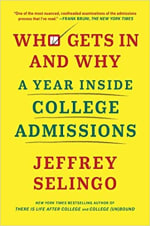How Many Schools Should I Apply To?

The average student will submit between five and eight college applications. But is that enough? And how many college applications is too many? Forbes reports that some students will submit as many as 30 or 40 college applications! Spoiler alert: that’s way too many. There must be a happy medium. But how do you know where that medium is? How many college applications should you send out? And what if you plan to attend an elite school? Does that impact how many applications you should submit?
Well, considering most colleges charge somewhere between $30 and $75 for an application, cost is certainly a factor. But what else must you consider when deciding how many applications to complete? With prospective college students submitting a larger number of applications with each passing year, how can you be sure you’re maximizing your opportunities without overdoing it?
If you’re ready to jump right in and figure it out, we recommend using our College Strategist tool, where you can enter in factors such as your standardized test scores, intended major, and state of residence, and instantly receive a list of schools divided into Safety, Target and Reach categories.
But if you’re still not sure where to draw the line, read on for some helpful tips as you decide how many schools will receive your application:
How do I choose which schools to apply to?
Part of determining the number of applications that you’ll actually submit is figuring out which schools are truly within your range. That doesn’t mean that every application you send is a sure thing, nor does it mean that you’ll be applying entirely to schools where you’re a shoe-in. Instead, the goal is to achieve balance by applying to a spread of schools. As you narrow down your list, you should begin to break schools out into the following three categories.
Part of determining the number of applications that you'll actually submit is figuring out which schools are truly within your range.”
- Safety Schools are colleges or universities that you feel confident about getting into. Safety schools are those at which your GPA, test scores, and general high school résumé would be considered exemplary. Choose schools where your standardized test scores, GPA, and class rank are generally above the 75th percentile among admitted students. Choose between two and three safety schools.
- Target Schools, or “Match Schools” are those colleges and universities which are at once an excellent fit for you, and where you believe you have a strong chance of gaining admission. Your academic performance metrics should align closely with those of other admitted students. Your standardized test scores, GPA, and class rank should fall between the 50th and 75th percentile of admitted students. Choose between three and five target schools.
- Reach Schools are those colleges and universities where your chances of admission may be somewhat lower, but where your academic credentials meet the basic thresholds for admission. Select colleges or universities where your test scores, GPA, and class rank fall at or below the 25th percentile of admitted students. Choose between two and three reach schools.
For a more detailed discussion on how to categorize your list of prospective colleges and universities, check out How to Choose Your Safety, Target, and Reach Schools.
How do I choose how many college applications to send?
The answer to this question can vary from one student to the next. Your educational goals, your past academic performance, your intended degree program and your financial situation will all play a role. Follow these steps as you map out your application strategy:
- Calculate Your Application Budget: To reiterate an important point, every application you send out costs money. As Forbes points out, the Common Application makes it easier to apply to numerous schools at once, but each school charges its own fee. Decide ahead of time how much you intend to spend on submitting applications. This will set an upper limit on how many applications you ultimately send.
- Calculate Your Time Budget: The college application process can be time-consuming. Preparing applications, writing essays, securing letters of recommendation—there are a lot of steps before you reach that thrilling moment of submission. The earlier you get started in the process, the more leeway you’ll have in assembling and submitting applications. While application deadlines can vary, most colleges will require submission by January. Whether you get started on the process at the end of junior year, in the summer before senior year, or as you grind through that final year of high school will determine how much time you have to work on your applications.
- Factor in Your Intended Major: Most students will change majors once or more during college, so don’t panic if you’re not sure what you plan to major in. On the other hand, if you already have a pretty good idea, you should be looking into schools that offer competitive, accredited degree programs in your area of study. With that in mind, consider how selective your major is. How many students get into your intended degree program at each school? Is there a risk that you might not make the cut at every school? If you are considering a highly selective major, you may want to increase the number of schools on your list to ensure you get into one with an accessible program in your major.
- Think about the intangibles: What do you need from your college experience? A big campus with lots of degree options, a major athletics program, and a ton of research facilities? A small student body, accessible professors, and an intimate campus? Are you looking for a research university, a private college, or an online education? These factors will all determine the type of school that makes your list and consequently, how many schools actually meet your needs.
- Rate your confidence interval: How certain are you that you’ll get into one or more of the schools on your list? Strong academic performance, great standardized tests, and robust extra-curriculars, especially athletic talent, can improve your chances…not that you didn’t already know that. If you’ve selected wisely—drawing strategically from a set of safety, target, and reach schools—your excellent high school résumé should get you into several very good schools. You can submit the average of five to eight applications with confidence. On the other hand, if your grades, test scores or extra-curriculars are closer to average, you may want to hedge your bets by adding a few more schools to your safety and target lists. You may end up submitting something closer to 10 or 12 applications.
- About the elite schools: Ironically, if you are a top student with your sights set on a top 20 college or university, you may in fact find yourself submitting far more applications than the average student. Given your academic excellence, this may feel counterintuitive. But the truth is, even extremely strong academic stats won’t necessarily tip the balance in your favor for any one of the top schools. Half of all students with 1600 SAT scores, for example, are rejected by the top Ivys. While those scores will almost certainly help you get into one or two elite schools, exactly which ones is something of a crapshoot. So if you feel you must attend a school typically ranked among the top 10, for instance, you should probably apply to all of them! This means you’ll need to submit 15 or more applications, including all the top colleges, and just a few “safety schools,” where you could still see yourself enjoying the college experience.
If you are a top student with your sights set on a top 20 college or university, you may in fact find yourself submitting far more applications than the average student.”


Need some inspiration? Check out our list of the Best Colleges and Universities for 2021.
You may also want to check out our discussions with college admissions expert Jeff Selingo to find out why it’s so hard to get into the top schools! We also have a great interview with Jeff where he discusses who gets into college and why. And if you love what you hear, check out Selingo’s new book, Who Gets In and Why: A Year Inside College Admissions. We also have an in-depth review of the book.
How many colleges is too many?
Whatever your personal situation, the reality is that you are almost certainly applying to more colleges than did prospective students of just a few generations ago. Forbes points out that, according to 2015 statistics from the National Association for College Admission Counseling, “36 percent of first-time freshman applicants applied to seven or more colleges, just over double the percentage from a decade earlier.”
In one respect, this seems to make a lot of sense. If you look only at admission figures around elite colleges and universities, you could get the impression that it’s harder to get into college than ever before. According to Forbes, “The most competitive schools are admitting a lower percentage of students every year.”
This suggests an uphill climb for applicants, especially those with their hearts set on the Ivy League. So it’s easy to see why more students are producing more applications. But does this approach actually make sense? Well, the top schools may be getting more selective but, interestingly, the broader college landscape is actually more accessible than ever before.
With a wide selection of mid-tier, online, and career college options, students have plenty of choices before them. Unless you feel you must attend an elite college or university, your chances of admission at a suitable college are pretty good, as long as you are realistic about your options.
Many of the colleges on your list are likely experiencing increases in acceptance rates—especially in the midst of the higher education shakeup catalyzed by the COVID-19 crisis. To this end, CNBC reports that “Colleges acceptance rates are up from recent lows and may go higher as schools start aggressively courting applicants.”
In other words, the number of applications you send out may depend on where you set your sights. If you compile your list realistically, and you seek admission into schools where you are a natural fit, there’s a good chance you’ll get into at least one of the schools you desire without having to paper the universe in applications.
In fact, according to Insider Higher Education, “In 2017-18, 65 percent of the one million students using the Common App platform applied to five or fewer colleges. Another 26 percent applied to six to 10. That leaves 11 percent who applied to more than 10, with 2 percent applying to more than 15.”
On the fringes, there will be students who apply to far fewer schools (perhaps because they are highly-recruited athletes who already know where they’re headed), and students who submit far more applications (perhaps because they are playing the high-stakes, steep-odds game of getting into an elite school). But the majority of students aren’t athletic recruits and most aren’t setting their sights exclusively on the elite schools.
In other words, if you don’t find yourself in one of these exclusive groups, welcome to the club. If you follow the guidance outlined above, you will likely land somewhere in the 50th percentile, which, as we noted from the outset, means you’ll send out somewhere between five and eight applications. Good luck!
***So now that you have a pretty good idea of how many schools you’ll want to apply to, how can you identify your safety, target, and reach schools? Well, we have a tool that makes it easy! Before you start sending out applications, visit the College Strategist and build your list today!
See our Complete Guide to the College Admissions Process for more.
Or jump to our student resource library for tips on everything from studying to starting on your career path.